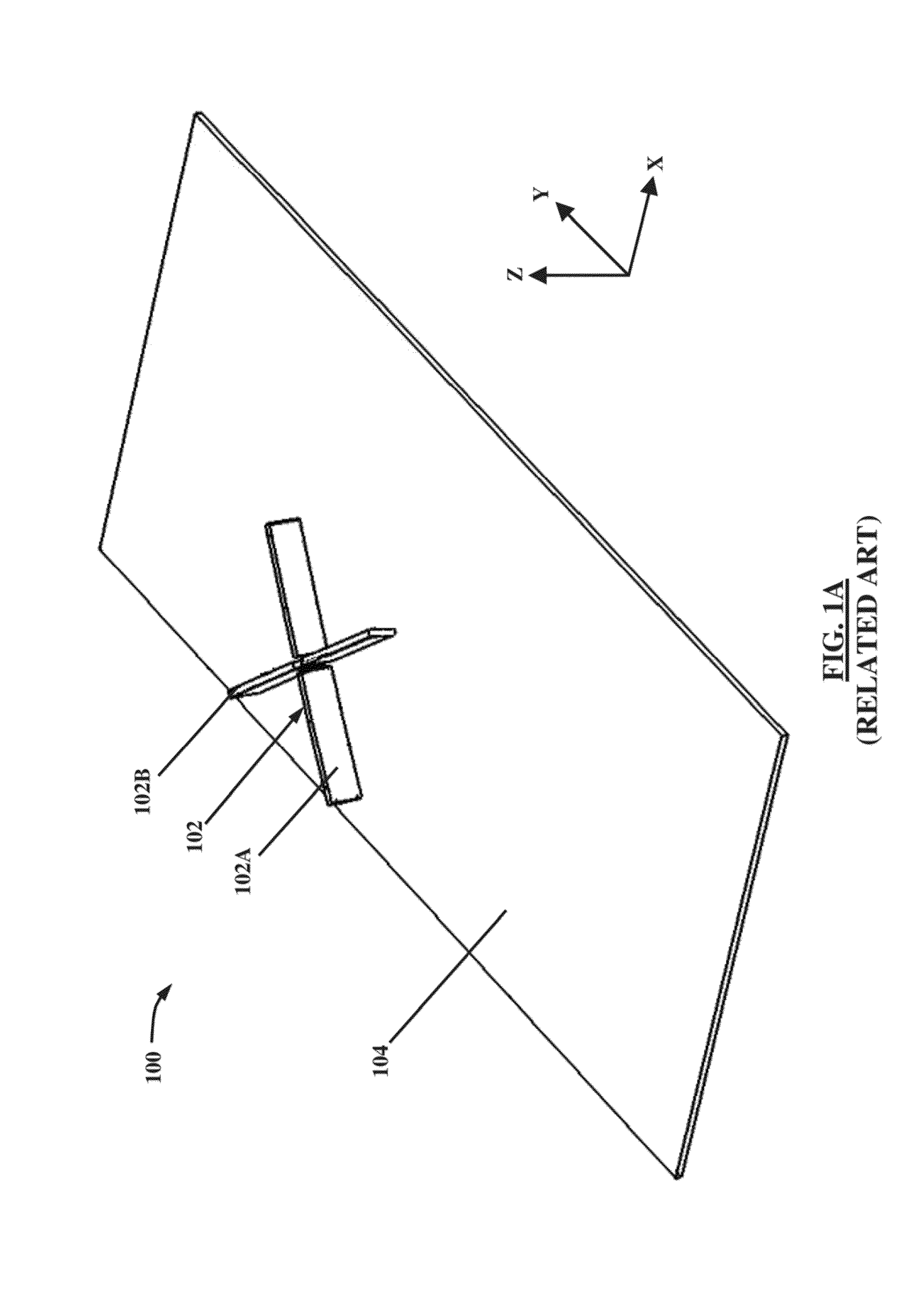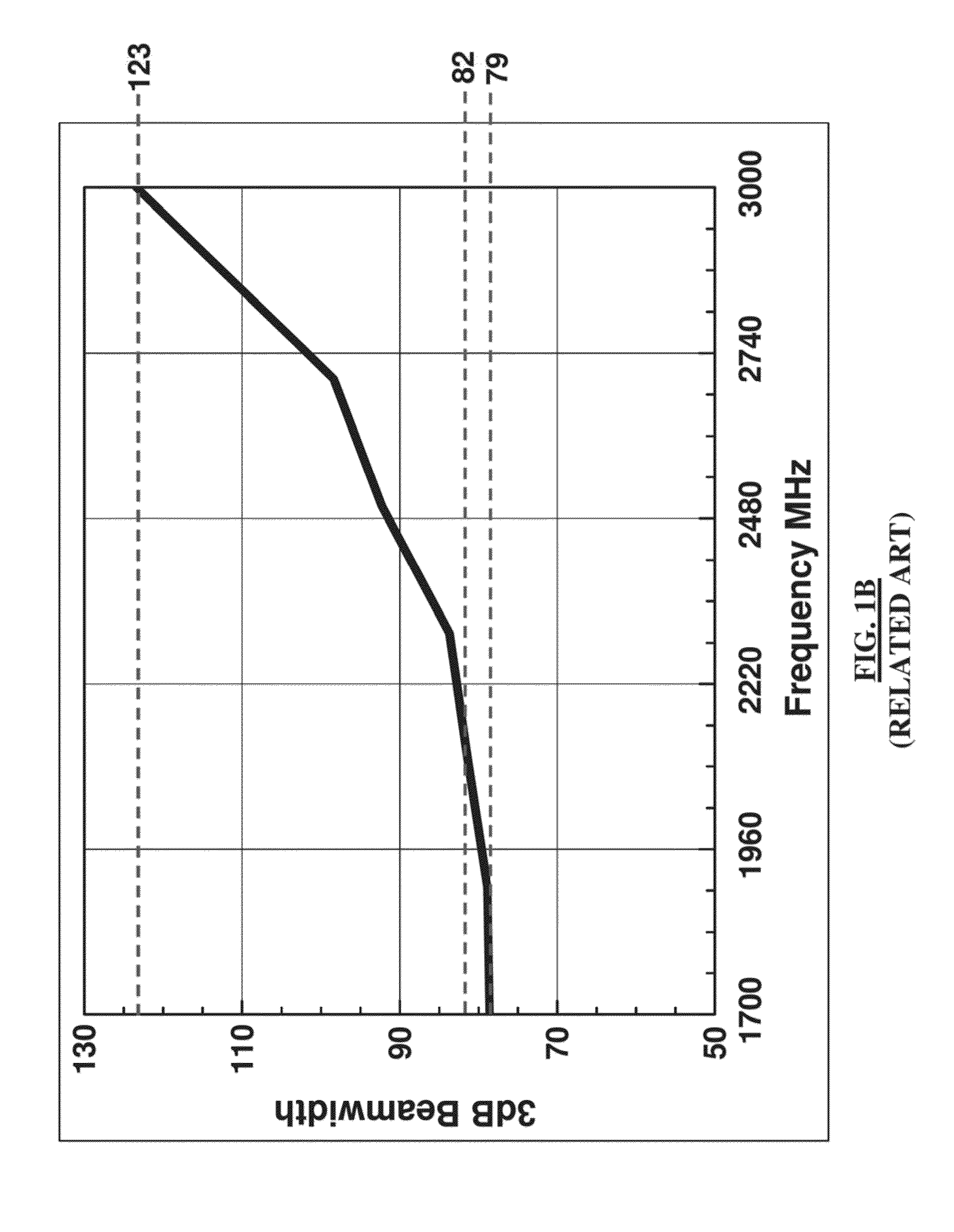Device and method for controlling azimuth beamwidth across a wide frequency range
- Summary
- Abstract
- Description
- Claims
- Application Information
AI Technical Summary
Benefits of technology
Problems solved by technology
Method used
Image
Examples
Embodiment Construction
[0048]Wireless communication networks currently deployed in the 1700-2200 MHz frequency range (e.g., AWS, DCS, and PCS networks) require antennas that operate over a bandwidth of 28%, where bandwidth=(Fmax−Fmin) / (0.5*(Fmax+Fmin)). When that frequency range is expanded to include networks that operate with frequencies as high as 2690 MHz (e.g., IMT-E networks), the required bandwidth increases to 46%. Exemplary embodiments go even further by providing a wide bandwidth antenna that maintains a near-uniform azimuth beamwidth across as high as a 55% bandwidth. In the embodiments described below, the aforementioned 55% bandwidth is described by way of example as being provided in the 2200-3000 MHz frequency range. However, it will be understood by those having ordinary skill in the art that exemplary embodiments may be modified to provide similar performance enhancements in other frequency ranges without departing from the spirit of the inventive concept.
[0049]Exemplary embodiments offer...
PUM
 Login to View More
Login to View More Abstract
Description
Claims
Application Information
 Login to View More
Login to View More - R&D
- Intellectual Property
- Life Sciences
- Materials
- Tech Scout
- Unparalleled Data Quality
- Higher Quality Content
- 60% Fewer Hallucinations
Browse by: Latest US Patents, China's latest patents, Technical Efficacy Thesaurus, Application Domain, Technology Topic, Popular Technical Reports.
© 2025 PatSnap. All rights reserved.Legal|Privacy policy|Modern Slavery Act Transparency Statement|Sitemap|About US| Contact US: help@patsnap.com



